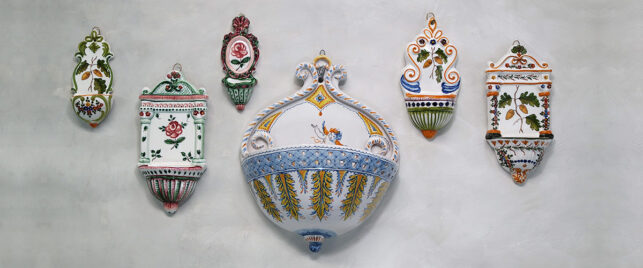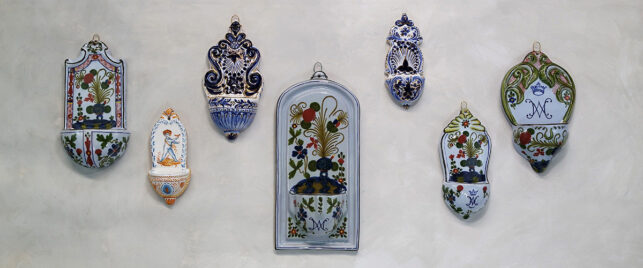Holy water stoups
The origins of the holy water stoups
The use of these containers of Holy Water became common in Churches around the XIth century. The word “Acquasantiera” (Holy water stoups) into common use starting from the 1700s and today refers to the stone, marble or alabaster containers found at the entrance of churches for the use of the faithful.
The adoption of small holy water stoups, also made of ceramic, is a widespread custom among Catholic families. The holy water stoups are affixed to the wall and used to dip the hand in holy water before making the sign of the cross, or simply displayed for decorative purposes.
Our hand painted ceramic holy water stoups
Holy water stoups with traditional decorations
Available in various shapes and decorations, such as the Garofano, the Compendiary, the Pavona and the Rose, our holy water stoups are made respecting the Faenza ceramic tradition.
Holy water stoups decorated with Pavona, Compendiary and Palmetta
Holy water stoups decorated with Rose, Acorn and Compendiary
Holy water stoups decorated with Garofano, Compendiary, Melograno
Holy water stoups – unique pieces
The unique pieces are entirely handmade, without molds, in various shapes according to the artist’s imagination. These holy water stoups are characterized by blue background ornaments and landscapes, flowers or sacred images. They are available in various sizes, even on order.
Holy water stoups decorated in Raphaelesque style, unique pieces
Buy online our holy water stoups!
A selection of our font is available for purchase on our online shop www.CeramicaFaenza.it







